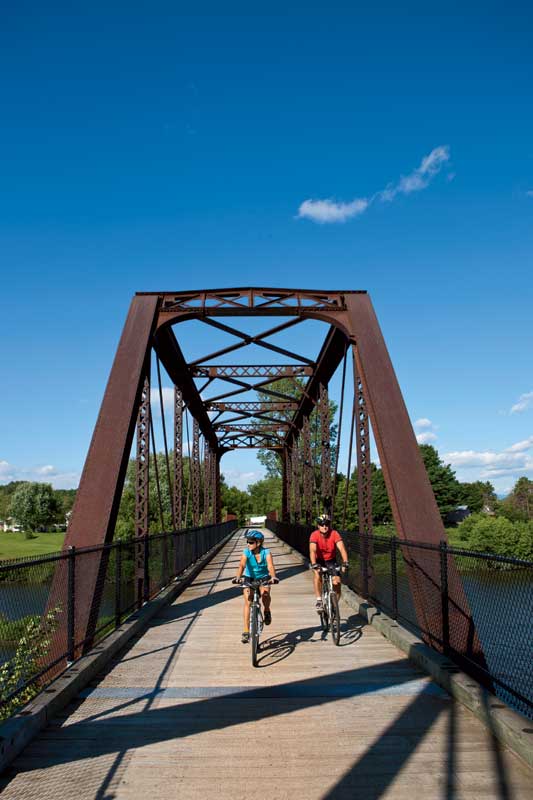Vermont Cycling Trails
I could almost hear train whistles, even though the tracks were gone. I’d just left the northern border town of Richford, Vermont, heading west on a one-time branch of the Central Vermont Railway. Freight trains once hauled milk and feed along this route–but now the old right-of-way has been reborn as the Missisquoi Valley Rail […]

Cyclists Tei Schneider (at left) and Cecil Fink roll across the historic iron railroad bridge spanning the Missisquoi River in Sheldon Junction, Vermont.
Photo Credit : Hendrickson, CoreyI could almost hear train whistles, even though the tracks were gone.
I’d just left the northern border town of Richford, Vermont, heading west on a one-time branch of the Central Vermont Railway. Freight trains once hauled milk and feed along this route–but now the old right-of-way has been reborn as the Missisquoi Valley Rail Trail, a bucolic corridor for walkers, horseback riders, cross-country skiers, snowmobilers, and cyclists like me. I was bound for St. Albans, more than 26 miles distant, traversing farm and forest along the scenic valley of the Missisquoi River.
The Missisquoi is one of more than 140 rail trails in New England, and currently the longest single rail trail in Vermont. As branch lines were abandoned, recreation enthusiasts got together with regional authorities and gave these corridors a second life. According to Tom Sexton, North


